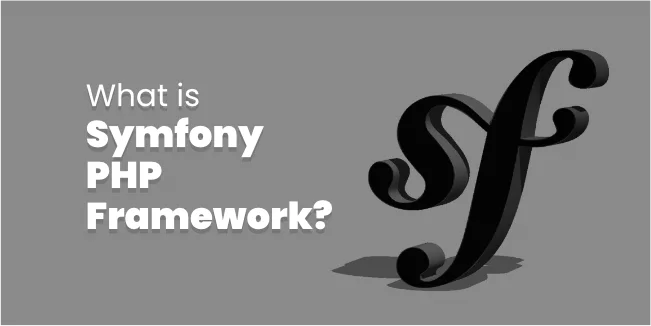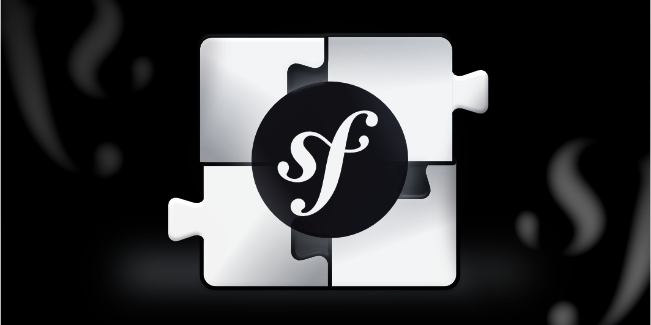Mobile Development
Technologies
webdevelopment
framework
symfony
What is Symfony PHP Framework?

Picking the appropriate web development framework is key to constructing a web solution. PHP has progressed rapidly and can now be used to create both simplistic and complex applications.
PHP is the most popular programming language on the internet today. The majority of websites in the world are developed using PHP. A web application may be created with pure PHP or one of its framework technologies.
One of the more liked PHP Frameworks is Symfony. What is he? Why should you use it? You will find all this in this article.
What is Symfony Framework?
Symfony is an open-source PHP framework and a collection of reusable PHP components first released in 2011 by Fabien Potencier. SensioLabs sponsors this framework. It's the backend of your website that Symfony handles.
The Symfony framework is a powerful backend platform used to create large apps. Many developers continue to prefer Silex, the tiny micro-framework, or the Symfony MicroKernel, and it's a popular application framework among open-source developers.
Because of the components of Symfony, such as form management, that are included out of the box, an application will be delivered swiftly and with high quality.
It leads to a more accessible work environment for developers and their future selves. Symfony is also most often used for large projects. Although we typically use it for big projects, smaller ones are possible too.
Because Symfony is available under an open-source license, it can be easily adjusted to fit the specific needs of any developer. All that's required is adding the necessary modules. Additionally, its flexibility and active community help ensure that Symfony always meets the latest trends. The tools provided by Symfony for this purpose allow the creation of secure applications, where users need to be authenticated before accessing some features or parts of the application.
With a massive and varied community, Symfony provides countless opportunities for each user. And if you can't find what you're looking for, you can simply utilize it and add it to the framework.
Symfony Components

These are independent PHP libraries that provide unique functionality in any PHP application. Currently, the Symfony framework contains more than 30 high-quality components. Let's take a look at how Symfony uses them:
- Workflow - In an object-oriented manner, you may make a process or life cycle for your item using this component. Each step is known as a location, and you can also define actions, called transitions, that describe how one place leads to another.
- HttpFoundation - This component defines the object-oriented layer in the HTTP specification. It replaces the default PHP global variables and functions found in the Symfony HttpFoundation component.
- Form - The Form component may generate, process, and reuse forms. The Form component is a utility that can help you solve the problem of allowing end-users to interact with and modify data in your application.
- HttpKernel - The EventDispatcher component aids the HttpKernel component in transforming a Request into a Response. This process is adaptable enough to be used for construction purposes such as full-stack frameworks (Symfony), micro-frameworks (Silex), or CMS systems (Drupal).
- Routing - Your app initiates a controller action whenever it gets a request, which produces an output. The routing configuration lets you decide which action to take for each incoming URL and provides the ability to make SEO-friendly URLs.
- Finder - This component uses an easy-to-use fluent interface to find files and directories based on various search criteria (name, file size, modification time, etc.). It includes a wide range of methods for defining search criteria, all of which implement a fluent interface so they can be chained together.
- Filesystem - It is useful for file system operations and file/directory path manipulation on any platform. It contains the basic file management tools you'll need.
- ClassLoader - If your project's classes follow typical PHP standards, this component will load them automatically. Since Symfony 3.3, this component has been considered obsolete; instead, use Composer class loading.
- DependencyInjection - This bundle may be used with any modern PHP project by including a PSR-11 compatible service container.
- EventDispatcher - Symfony's EventDispatcher component makes it possible for different application components to communicate with each other using a system of events. It is made possible by the Mediator and Observer design patterns used in the Component.
- Serializer - This component converts one type of data into a different format (XML, JSON, YAML, etc.) and back again.
What is The Model-View-Controller Architecture?
If you want to increase your efficiency when using the PHP Framework Symfony, then it is best to structure it with an MVC pattern. It stands for Model View Controller, and it essentially creates a foundation that helps build web apps and websites in a logical way that contains different layers. By dividing your project into three pieces, the process will be more streamlined:
- The 'Model' refers to the organization of data and how it is stored in a database.
- The "View" is responsible for presenting data to the user.
- The "Controller" is the bridge between Models and Views. It serves as an intermediary by sending data from Model to View, or in other words, processing data, updating it when necessary, and displaying it user-friendly.
Although it can sometimes be complex, MVC allows developers to divide the software into smaller components. It makes it easier to deploy, maintain, and test each component separately.
PHP's MVC programming framework creates a more user-friendly coding environment and process. However, with Symfony, you are not limited to just MVC. If SoC (Separation of Concerns) is your primary goal, as it should be, then don't worry if MVC isn't your taste. With Symfony, you can use any third-party libraries like Doctrine or Propel for the Model and Twig View.
Benefits of Using Symfony

It's no secret that other PHP frameworks are more crowded than Symfony. So why should you use it? Here are some of the essential advantages of this framework.
Flexibility
Symfony PHP Framework doesn't lock you into the framework's capabilities. Instead, it allows us to optimize our code by utilizing only the essential features. You can limit yourself to the tools you require without having to go through the rest of them. Framework Symfony's flexibility aids in productivity increases by making things easier without becoming overly complicated or burdensome.
Innovation
Symfony is often associated with following current trends. However, this PHP Framework goes significantly further. The company and the community surrounding it constantly search for methods to make things simpler for developers. Outside of the PHP world, this happens all too frequently. Symfony introduced "dependency injection" into its PHP environment, a design pattern from another language: Java which aims to simplify software development.
Quickness
Symfony PHP framework is widely considered the best option available due to its efficient use of resources. You can improve performance by optimizing your servers and apps with Symfony support. Additionally, Symfony utilizes less memory while still permitting high-speed app development.
User-friendly
Symfony is a PHP Framework accessible to anyone, regardless of expertise. It was made possible by professional support from the company and a huge community of people working together to develop Symfony's capabilities. That's why it is considered to be beginner-friendly.
Expandability
Symfony's framework is based on bundles - one bundle equals one specific function. It allows you to not only keep and use bundles you create but also share them with the Symfony community. Even big changes to your framework won't require a full reconfiguration when using this system.
References
Symfony is a PHP framework with high-quality code and many third-party add-ons. Because of its stability, sustainability, and interoperability across all versions, several sites and applications use it. Facebook is one of the largest Symfony users. For example, the Facebook Ads API runs on Symfony components.
What Has Been Made With Symfony?

You can talk for hours about the advantages of Symfony PHP Framework because the list of advantages is extremely long. However, the real show of his strength is to show what he has managed to create with his help. From apps that make life easier to healthcare apps. Here are some of the best Symfony usability examples.
Spotify
Spotify, which has over 75 million users who are active all the time, uses Symfony for maintenance. Every second, Symfony helps Spotify process more than 600 thousand requests.
Not only does the Symfony PHP framework help develop robust and elastic platforms, but it is also convenient for smartphone users who experience massive traffic.
Trivago
Trivago is most well-known for its search feature, where users can check and compare hotel prices. The website has heavy page traffic, with millions of users visiting regularly.
The team at Trivago has selected the Symfony PHP framework to provide their visitors and clients with the best possible experience when searching for and to compare hotel prices.
Doc Planner
More than 7 million patients regularly visit Doc Planner's website to find a specialist doctor near their house.
Patients can use the website to search for and contact doctors. They may also set up appointments as needed. Doc Planner has chosen to improve its user experience with Symfony, a free software framework used to build websites and online applications.
BlaBlaCar
Many people around us use BlaBlaCar to find out the ride at an affordable price. BlaBlaCar's working and managing team uses Symfony to efficiently manage both the website's front end and back end, as well as the mobile application.
Dailymotion
Dailymotion is the following well-known and most famous example of the Symfony PHP Framework. It is one of the world's largest video activity websites. Dailymotion has many visitors, with over 42 million people browsing it each month.
Users search for online videos more than 922 million times, and the team wants to maintain that quality of experience. They have chosen the Symfony framework
Conclusion
Building an app or website is no small feat. Luckily, there are ways to help ease the process. PHP Framework Symfony is one of the best options out there. The advantages of Model-View-Controller can help you save a lot of time when designing your project. Using Symfony's Framework and reusable components might be just as cost-effective as time-efficient in terms of development efficiency.
So, why not start building your hammer immediately with a community of dedicated developers who have created custom tools for you?